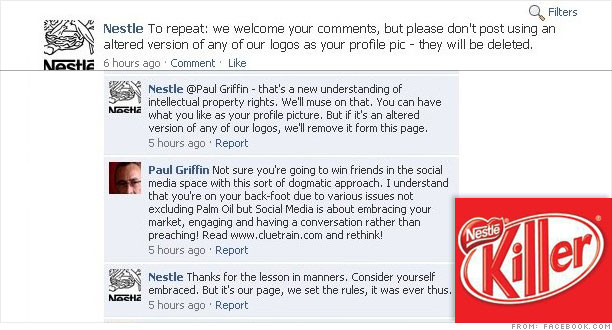1155 words | ~6 min
Every year, with a certain regularity, various newspapers, publishing houses, bloggers and other organs of social commentary like to announce their words of the year: lexical items which, for their editors, embody some truth about language, current affairs, popular culture, technology or similar from the year in question. The most widely publicised of these (and among the most thoughtfully chosen) are typically those by lexicographers and linguists, especially those by the New Oxford American Dictionary (which picked 'unfriend' as its word for 2009) and the American Dialect Society (which picked 'tweet'). These picks are always fun, even where they are less insightful than the NOAD and ADS selections. As well as telling us a little about trends in pop culture, their endurance reflects both an interest in the formation and propagation of new (or newish) words and a continued belief that there is an intimate, or at least interesting, connection between language change and culture change.
Bates141, an Asia-Pacific-based consumer insight firm, has taken this approach and built on it. A year or so ago it published its first Dictionary of Change (large PDF), a guide to dozens of new words and phrases (mainly in English, with some from other Asian languages) that in their opinion throw interesting light on current consumer and social trends from 2008.
I tend to hold that good insights have some requirements in common with good dictionaries. They should be interesting, accurate and useful. How does the Dictionary of Change stand up as a dictionary and a piece of insight?
It is definitely interesting. For a start, it is very entertaining reading, especially if you enjoy portmanteau words. (There are loads of these in here, words of the 'ecosexual' and 'eatertainment' varieties.) It is also full of sharp, interesting insights into consumer attitudes and behaviour collected throughout the Asia Pacific region. As an accessible overview of consumer trends it therefore also passes the test of being useful and accurate, especially if you don't know much about those markets.
Of course, though, it's not just a piece of consumer insight analysis: it's a piece of consumer insight analysis dressed up as a dictionary. Here's where it starts to fall down for me, in terms of its accuracy and its usefulness. The big question is: why was a dictionary form chosen for this? There are two possible answers: either because (as mentioned above) people like lists of new words; or because the authors really believe that there is something extra useful to be gained from studying the ways in which consumers are reflecting social trends and attitudes in their use of language. In other words, is the dictionary form just meant to be interesting, or is it meant to be accurate and useful as well?
Dictionaries, like good insight reports, must reflect what's going on in the world if they want to be interesting and useful. A dictionary of shipping terms must faithfully record the terms used by people who sail ships and who work in the world of shipping that refer to ships, shipping and other ship-related things. A dictionary of law must do the same for legal speak; a dictionary of north-west English or of medieval English has the same sort of challenges. For a general dictionary (one that doesn't restrict itself to any subset of a language) the challenge is to record as many words as possible that have a fairly general currency and usage: in other words, a good coverage of words that English speakers can expect to use or encounter.
The Dictionary of Change (as its title makes clear) sets itself up as a new-words dictionary, and these are always tricky projects to manage. The words they contain are necessarily new, and so less familiar. Still, though, a good new-words dictionary will typically include words that have developed a fairly good currency and breadth of usage (so 'fairly new' words rather than 'very new' ones), and their editors tend to have to make a judgement about their chances of survival.
Here's the big problem with the Dictionary of Change as a dictionary. I can't speak for its non-English entries, but it is substantially in English, and the English entries do not, for me, pass these tests of currency and breadth. 15 of the English entries have notes to say that they have been 'coined by Bates141', and as such they do not really record anything but the kind of useful internal shorthand that insights people use a lot. Many of the others have a similar marketing-and-journalism ring to them. Lexicographers are always wary of 'journalism speak': words or collocations that are coined by journalists and only ever used by other journalists. (See my article on -gate words for a particularly productive set.)
This is a fluffy and amusing list of new hybrid words, most of which I doubt have any real currency beyond planners and journalists. This is fine for the interest value it provides, but it does not for me fulfil the criteria of being accurate or useful as a dictionary. It is accurate and useful in the coverage of consumer phenomena it offers, but little is added by the admission that marketing people have a word for each phenomenon. It doesn't tell us much about the interplay between consumer trends and language change, and for that reason it's hard to see why they packaged it as a dictionary except for novelty value.
It’s a shame, because 2008 would have been the perfect year for planners to write a guide to the words that really experienced sharp spikes in currency. Consider some of the following words and phrases, which most of us didn't know or use much before 2008:
- credit crunch
- sub-prime
- toxic assets
- credit default swap
- collateralised debt obligation
- double-dip
- negative equity
- ninja ('no income, no job or assets')
- tranche
- bailout (in non-aviation senses)
- deleveraging
- quantitative easing
- fiscal stimulus
- financial exclusion
Almost none of these are new words. Most were specific to bankers and economists before 2008. Now they have entered fairly common usage as part of the process of response to economic catastrophe that has exposed previously obscure financial practices and problems to public scrutiny. That, for me, is the real story of popular language change from 2008.

